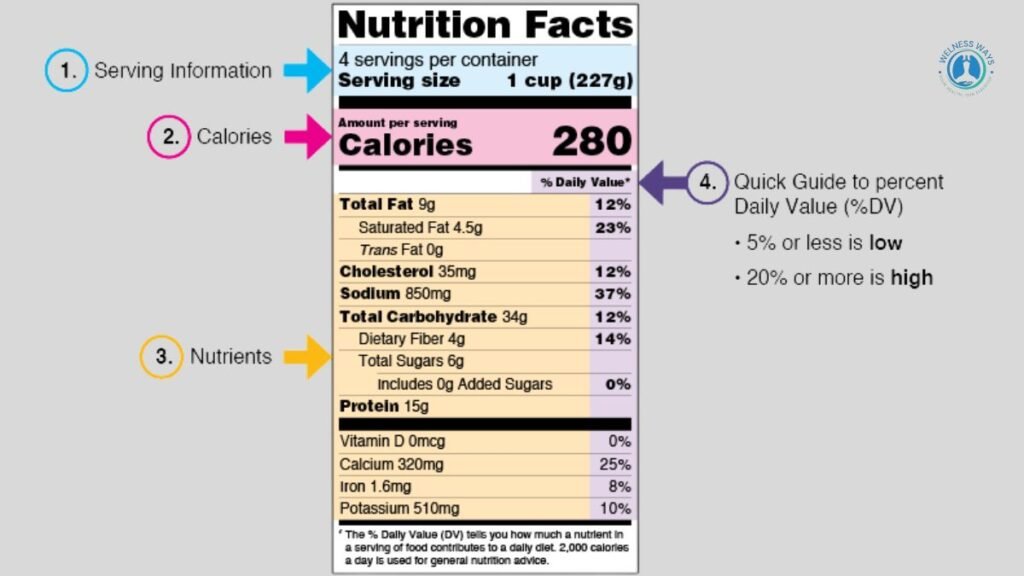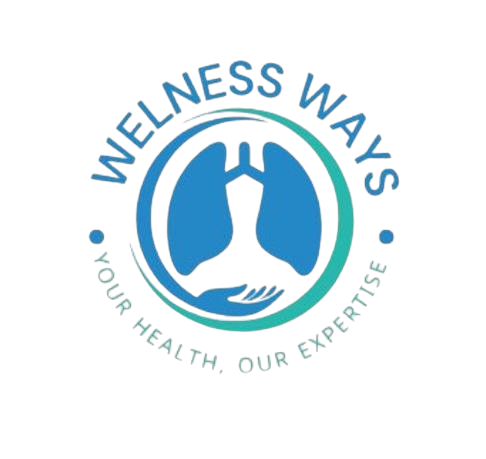How to Understand Nutrition Labels- People look Nutrittion lebel at food for a reason of their variety.But many consumer Would like how to read More information easly and More effectively. These following labes are intended to make it Easy to understand for you to use the Nutrition Facts labels to make quick, informed food decisions to help you choose a healthy dietplan.
Why Nutrition Labels Matter
Nutrition labels are like a sneak peek into what’s inside your food. these help make smarter choices for you, ehatever you want to weight lose, and feel more energetic and healthy, or keep your heart healthy. By understanding these labels, you can avoid unhealthy stuff and pick Nutritional food that make you feel great. Plus, it only takes a few seconds once you know the trick!
Overview-
Theses Information in the top section See Section of some Sample Nutrition labels below with reach Nutrition food and beverage product. its contains product-specific Knowledge (serving size, calories,and more nutrient information).and bottom section contains a footnote that detailed the % per day Value and gives the best number of calories. which used for general nutrition advice.
In the Nutrition Facts labels below. We have colored certain sections to help you focus on those areas that will be explained in detail information. Note that these colored sections are not on Dicto food labels of products you purchase.

Serving Information: The Starting Point
The first thing you see on most nutrition labels is the serving information. This is super important because everything else on the label is based on it. Think of it as the portion size the makers suggest. But here’s the catch—it’s not always what you’d eat in one go. For example, a bag of chips might say one serving is 10 chips, but who stops at 10? Ignoring this can trick you into thinking something is healthier than it is.
- What it tells you: Serving size is listed in common measurements, like cups, pieces, or grams. Right next to it, you’ll see servings per container. This helps you figure out how much of the package you’re really consuming. If the container has 4 servings and you eat half, that’s 2 servings—not just one.
- Why it matters for health: Eating more than the suggested serving means you’re getting more calories and nutrients than listed. Over time, this can add up and affect your weight or energy levels. For instance, if you’re watching your sugar intake, doubling the serving doubles the sugar. It’s a simple way to control portions without pulling out a scale every time.
- Tips for using it: Always check how your real portion compares. If you pour a bowl of cereal, measure it once to see what a serving looks like. This builds a habit of mindful eating. Also, remember that serving sizes got updated a few years back to match what people actually eat, so they’re more realistic now. For kids or older folks, adjust based on their needs—smaller bodies might need smaller servings.
- Common mistakes to avoid: Don’t assume the whole package is one serving. Things like soda bottles or candy bars often have multiple servings. I once ate a “single” muffin that turned out to be two servings—oops! Paying attention here keeps you from accidental overeating.
| Like these | ||||
|---|---|---|---|---|
| 1 Serving of Lasagna | %DV | Two Serving of Lasagna | %DV | |
| Serving Size | One cup | Two cups | ||
| Calories | 280 C | 560 C | ||
| Total Fat | 9g | 12% | 18g | 24% |
| Saturated Fat | 4.5g | 23% | 9g | 46% |
| Trans Fat | 0g | 0g | ||
| Cholesterol | 35mg | 12% | 70mg | 24% |
| Sodium | 850mg | 37% | 1700mg | 74% |
| Total Carbohydrate | 34g | 12% | 68g | 24% |
| Dietary Fiber | 4g | 14% | 8g | 29% |
| Total Sugars | 6g | 12g | ||
| Added Sugars | 0g | 0% | 0g | 0% |
| Protein | 15g | 30g | ||
| Vitamin D | 0mcg | 0% | 0mcg | 0% |
| Calcium | 320mg | 25% | 640mg | 50% |
| Iron | 1.6mg | 8% | 3.2mg | 20% |
| Potassium | 510mg | 10% | 1020mg | 20% |
Calories:
This is often bolded and easy to spot because it’s aBiggest Surprice. the Calories are basically the energy your food provides. Your body needs them function, like Fuel of a motor bike or car. But too many can lead to weight gain instantly, while too few might leave you tired.
What it shows: These label lists calories per serving. Sometimes there’s a “calories from fat”, but that’s less common now. A proper guide: most adults need about 2,000 calories per day, But it’s totaly depend on your actevity and your work.
Calories aren’t the enemy; they’re just a tool. Focus on quality over quantity, and you’ll feel more energized throughout the day.
Out source For more – Visit now
Nutrients: The Building Blocks
Now we get to the nutrients section. This is where the label lists fats, carbs, proteins, vitamins, and more. It’s divided into things to limit (like bad fats and sodium) and things to get enough of (like fiber and calcium). Nutrients are what keep your body running smoothly, from strong bones to good digestion.
- Fat breakdown: You well see total fat list, plus splits for saturated, trans, and often unsaturatedlike. Saturated and trans fats boost up cholesterol and heart problems, so aim low try to stay under 15 grams of saturated a day if you’re on about 2,000 calories. for Healthy fats from stuff like avocados aren’t always broken out, but it’s wonderfull for your brain and over all health.
- Carbs and sugars: Total carbs cover mostly fiber, sugars, and starches. Added sugars get called out now ‘reasons it’s tie into weight gain and boost sugar. Shoot for under 50 grams of those daily. Fiber’s the real MVP—it keeps you full and your gut happy, so get 25-30 grams Per day.
- Protein basics: It helps build muscle and curbs hunger. Average adults do fine with 46-56 grams a day, But it’s totally depend on your work out. Beans and such are solid plant options over meat.
- Vitamins and minerals: vitamin D, calcium, iron, potassium to dodge shortages. it’s a power house of your body avarage human started get Natural ways to Vitamins and minerals. because its free up sideeffect.
The Percent Daily Value (%DV):
Finally, the %DV column. This tells you how much of your daily nutrient needs one serving covers, based on a 2,000-calorie diet. It’s like a percentage grade showing contribution to your day’s totals. Anything 5% or less is low; 20% or more is high.
- How it works: Each nutrient’s percentage (%DV) comes from standard daily Basic needs. Like, if a food has 10% DV for calcium, one serving gives you 10% of your daily calcium. It’s not Usefull Everybody’s kids or gym buffs might need more or less but it’s a good starting point.
- Why it’s great for health: It makes choices easier. Want more fiber? Go for foods with high %DV for it. Cutting saturated fat? Skip anything over 20% DV. It’s super useful for comparing stuff—like picking a cereal with more vitamins and less sugar.
- Smart ways to use it: Plan meals with it. Try hitting 100% DV for vitamins across your day’s food. For sodium, keep each meal under 20% DV to stay safe. When I shop, I check %DV—like a yogurt with 30% DV calcium is awesome for strong bones.
- What to watch out for: %DV isn’t listed for everything, like protein unless it’s highlighted. It’s based on a 2,000-calorie diet, so tweak it if you eat more or less. Added sugars don’t have %DV yet, but you can check the grams. Pair it with other label info for the full scoop.
The %DV makes labels less overwhelming. It’s a quick scan tool—high for good stuff, low for limits.
Wrapping it up, understanding nutrition labels isn’t about being a health nut; it’s about empowerment. Start small: next time you’re at the store, pick one item and check these sections. Over time, it’ll become second nature. Eating well boosts your mood, energy, and longevity. Remember, no food is all bad or good—it’s about balance. If you have allergies or specific needs, look for those warnings too. Stay curious, eat mindfully, and your body will thank you. What’s one label tip you’ll try first?
Also Read- How to Reduce Sugar Cravings Naturally:

